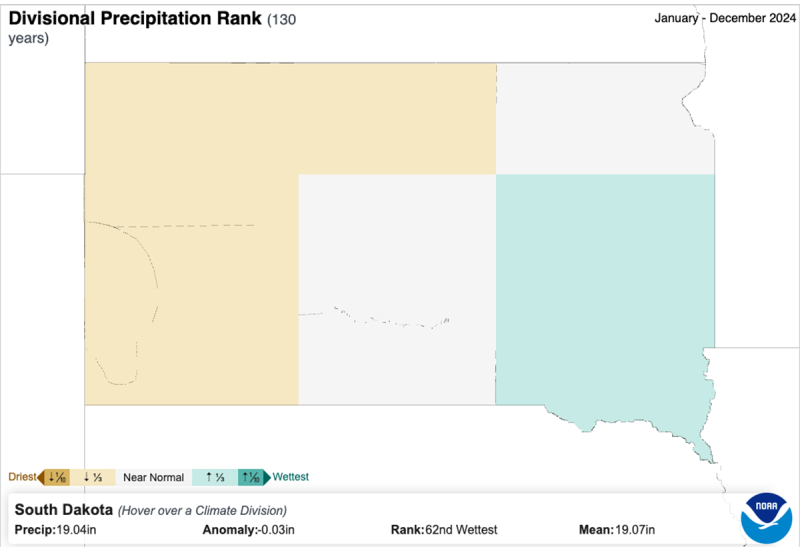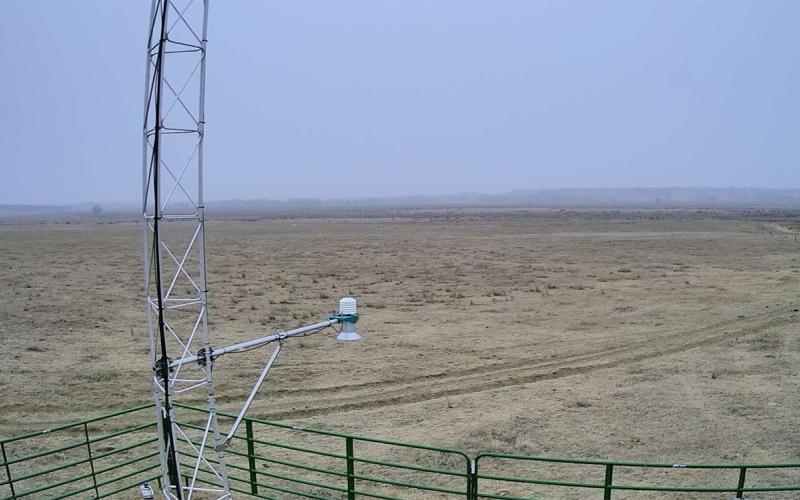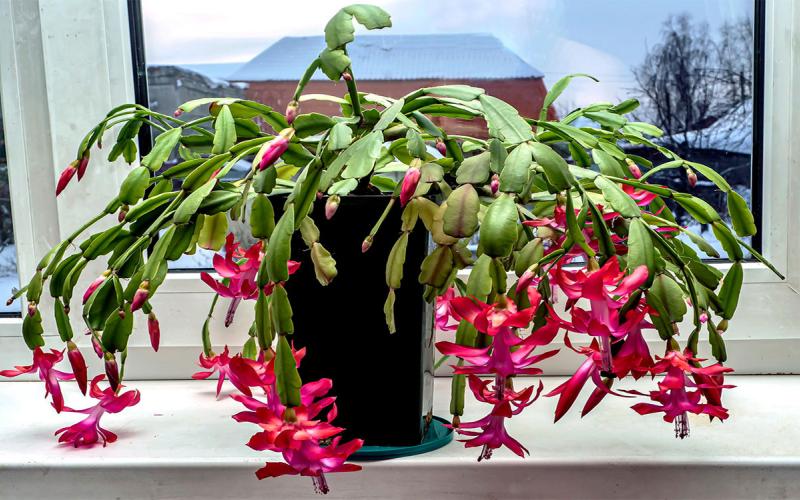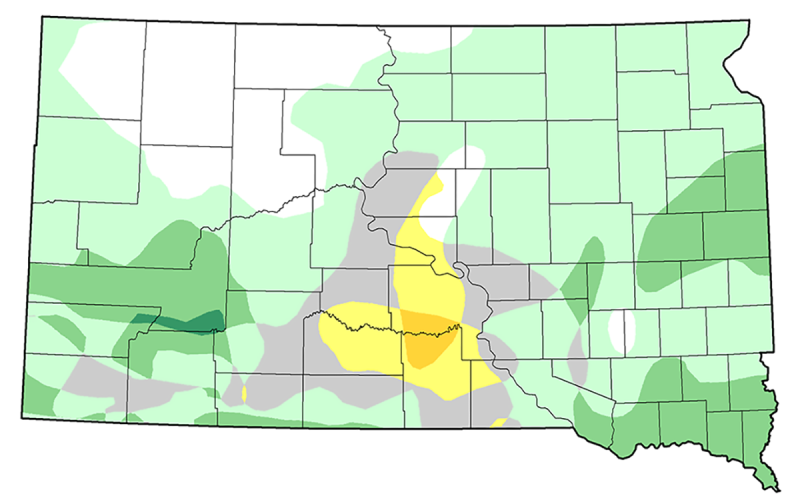The final climate numbers are in for the year of 2024, and South Dakota ended up having the fifth warmest year on record out of 130 years of climate history. The nation overall had its warmest year on record. Data from NOAA’s National Centers for Environmental Information also showed that statewide, the year ranked as the 62nd wettest, but the details tell a more interesting story.
Regional Climate Review

Northwest
In the northwest region, annual precipitation was 40th driest on record, just over two inches below average and in the driest one-third of the past 130 years. Annual temperature was second warmest on record, with a 4.2 degrees Fahrenheit difference from normal. These conditions contributed to drought development in 2024.
North Central
The north central region measured 1.84 inches below normal for the year, or 37th driest on record. Annual average temperature was seventh warmest on record, coming in at 3.6 degrees Fahrenheit above normal for the year.
Northeast
Northeastern South Dakota fell close the long-term average with 0.61 inches above average precipitation for 2024. This region had a 4.2 degrees Fahrenheit difference in temperature from the annual normal, to end up the fifth warmest in 130 years.
Black Hills
The Black Hills region measured 4.14 inches below average. This was enough to rank 18th driest in 130 years of records. The Black Hills ended the year as second warmest on record, 3.7 degrees Fahrenheit warmer than normal, which contributed to drought conditions across this region.
Southwest
The southwest region was also very dry, with the regional average precipitation ranking 25th driest, or 3.13 inches below average. However, within this region, Fall River and Oglala Lakota counties were the driest in the state. Both counties ranked seventh driest on record, driven in part by record dryness in the month of June. This area experienced drought throughout most of the year. Warm temperatures also played a role, as this region ended the year as the second warmest on record.
Central
Central South Dakota was near average for moisture, with final numbers showing 0.97 inches above normal for the year. This region was eighth warmest on record, or the relative coolest ranking of all regions of the state. Yet, the central region still finished the year 3.3 degrees Fahrenheit above normal.
South Central
The south central region of the state was slightly drier than average by 1.03 inches. The south central region also ranked as the fifth warmest year, as drought conditions varied throughout 2024.
East Central
The east central region had 3.20 inches above normal, ranking 93rd wettest, or in the top one-third of wettest years on record. It was also fifth warmest on record, ending 2024 with an annual average temperature of 48.3 degrees Fahrenheit, or 3.7 degrees Fahrenheit above average.
Southeast
On the southeast end of South Dakota, Lincoln County ranked as the eighth wettest on record, primarily due to the extreme rainfall in the month of June. This region overall ranked 23rd wettest in 130 years, with 4.38 inches above average across the multi-county area. Southeastern South Dakota ended the year as fourth warmest on record.
2025 Outlook
As the 2024 calendar year came to an end, there is drought across the state following the dryness in much of the fall and early winter. Crops, pastures, range, and gardens will all rely on spring and summer moisture more than usual in 2025. There are no clear signals on the long-term temperature outlook through the summer season, but there are some hints towards a drier summer. Many areas of the state have faced drought over the last few years, and it looks as though we should be prepared for the potential of another dry summer.


